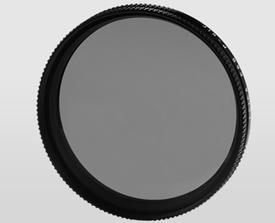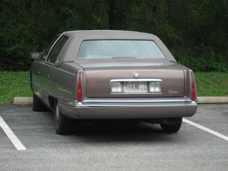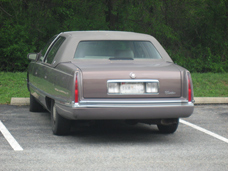Index Page
![]() News
News ![]() Products
Products ![]() Pricing
Pricing ![]() Distribution
Distribution ![]() Notes & Interesting Articles
Notes & Interesting Articles
Binoculars
![]() Telescopes
Telescopes
![]() Cameras
Cameras ![]() Accessories
Accessories ![]() Warranty / Service & Repair
Warranty / Service & Repair

 Polarizing Filters for Leica APO-TELEVID Field Telescope
Polarizing Filters for Leica APO-TELEVID Field Telescope
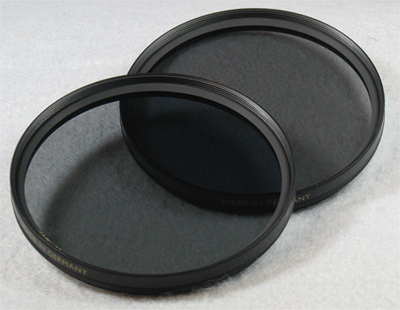
Above: two Circular Polarizing filters made to C7 specifications shown overlapped (103,149 bytes).
Click on image to see enlarged view (241,799 bytes).
The Circular or Linear Polarizing filters are among the most valuable accessories that may be installed onto a binocular or telescope when used for terrestrial applications. Company Seven offers the best quality filters available in terms of optical performance and mechanical ruggedness - we do not care to sell the cheapest but instead focus on the best.
Polarizing sun glasses are very popular among those who recreate or work outdoors since on sunny or overcast days and even on rainy days a polarizing element can greatly reduce the glare or light reflected off non metallic surfaces. The degree of the effect depends on the angle of the observer to the source and the surface, but the filter works to reduce glare off snow or water, on leaves in a forest, off feathers of a bird, the glare off windows or damp street surfaces. These add comfort and bring more clarity to the observing experience.
Right: Circular Polarizing Filter. Note the knurled edge of the rotatable component of the filter (103,149 bytes).
Click on image to see enlarged view (241,799 bytes).
Sir David Brewster (1781-1868) is credited with the first explanation of the polarization phenomenon of light reflected at specific angles. He was a Scottish physicist and experimenter who also invented the kaleidoscope, made noteworthy improvements to the stereoscope. When natural or artificial light strikes a reflective surface at a certain angle (termed "Brewster's Angle"), then the light reflected from that surface is plane-polarized. Sir David Brewster demonstrated and explained there is a simple relationship between the incident angle of the light beam and the refractive index of the reflecting material.
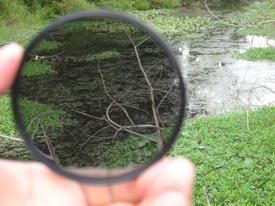 Sunlight and almost every other form of natural and artificial illumination produce light waves whose electric field vectors vibrate in all those planes that are perpendicular to the direction of propagation (coming from the source). When the electric field vectors are restricted to a single plane by some means of filtration of the beam, then the light is referred to as plane or linearly polarized with respect to the direction of propagation, and all waves vibrating in a single plane are termed plane parallel or plane-polarized. When light travels through a linear polarizing material only a selected vibration plane is passed by the polarizer, while the electric field vectors vibrating in all other orientations are blocked. Linearly polarized light transmitted through a polarizer can be either passed or absorbed by a second polarizer, depending upon the electric vector transmission azimuth orientation of the second polarizing material.
Sunlight and almost every other form of natural and artificial illumination produce light waves whose electric field vectors vibrate in all those planes that are perpendicular to the direction of propagation (coming from the source). When the electric field vectors are restricted to a single plane by some means of filtration of the beam, then the light is referred to as plane or linearly polarized with respect to the direction of propagation, and all waves vibrating in a single plane are termed plane parallel or plane-polarized. When light travels through a linear polarizing material only a selected vibration plane is passed by the polarizer, while the electric field vectors vibrating in all other orientations are blocked. Linearly polarized light transmitted through a polarizer can be either passed or absorbed by a second polarizer, depending upon the electric vector transmission azimuth orientation of the second polarizing material.
Left: Circular Polarizing filter hand held over a dat lit pond scene (40,578 bytes).
Click on image to see enlarged view (288,522 bytes).
By eliminating the reflection of light off the water surface for example, depending on the transparency of the water it may be possible to see fish, reefs, etc. below. By eliminating the reflection of light off the tiny particles and water droplets suspended in the atmosphere, the polarizer also shows skies as more color saturated and slightly darker. This not only helps one to see more details, but it also reduces eye fatigue over longer observing sessions.
The degree of the effect of the polarization depends on the orientation of the sun to the target and to the photographer, and it also varies with the filter's rotational orientation. The filter also acts as about a 2.5 stop neutral density filter with an adjustable degree of warming or cooling of the object in view. The filter factor itself does not vary dramatically - regardless of the polarization it is always attenuating the incoming light. The polarization effect can suppress specular highlights and glare that might otherwise cause a camera meter to think the filter is having changing its light transmission, but in reality the ND factor of the filter does not obviously change. So for example, if you are taking pictures of a bird standing in a pond situated at 90 degrees (off to your right or left) from the setting sun then there is a great deal of polarized light with specular reflections and glare, so as the filter is rotated the filter factor may appear to vary by more than 2 or 2.5 stops. This will have a dramatic impact in reducing specular highlights and glare and it is that change that will largely account for the meter reading changes. For reasons related to the target-sun orientation, for deep sky astronomy applications the use of polarization filter has no positive effects at all since this will needlessly darken the image.
If one polarizing filter is rotated while facing a second polarizing filter then these will act as a variable neutral density filter not only reducing transmission by their own respective filter factor but also gradually diminishing light that is transmitted and shifting the bandpass into the blue. For this reason we warn our customers DO NOT wear polarized sunglasses or prescription spectacles when using a Polarizing filter on a telescope or camera lens.
 Countryside scene image taken without Polarizing Filter |
 Countryside scene image taken with Polarizing Filter |
The images below were taken by a digiscopy tecnique. This employes a simple pocket sized digital camera photographing through the zoom eyepiece of a Leica TELEVID APO 82. A circular polarizing filter is attached onto the telescope during both exposures so there is always some effect from the filter. However, for minimal and maximum degrees of polarization effect the circular polarizing filter element is simply rotated clockwise within its rotating cell for the desired effect.
 Pond scene specular highlights. Digiscoping with Circular Polarizing Filter dialed to minimum Click image to see englargement |
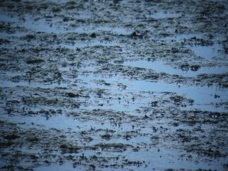 Pond scene image taken by digiscoping with Circular Polarizing Filter at maximum eliminating glare Click image to see englargement |
The glare reduction properties of these filters are amazing. They are very obviously effective on bright sunny days, but even on the most overcast or rainy days these are effective too. Note how the glare on the windshield on the vehicle photographed below is completely eliminated. A similar reduction in glare off leaves, even on wildlife makes it easier to resolve fine detail and true colors. The images below were taken without filter by a simple pocket sized digital camera, and then with the same camera but with a polarizing filter held by hand over the front of the camera - simple but effective!

|

|
Company Seven offers both arrangements of Polarizing filters Linear Polarizing and Circular, the latter being more costly than the former. The Linear Polarizing filter offers the capacity to reduce the effect of polarization to a lower threshold than that possible by a Circular Polarizing filter, however this may will be incompatible with many modern TTL metering cameras.
The filters we offer will each be the best there is in their class. We offer both the Leica branded filters but Company Seven also offers filters that meet the same optical standards as those of Leica but also incorporate improved sealing and rugged construction to make these filters best suited for high risk applications in environmental extremes. In addition, the Polarizing filters offer by Company Seven are treated with an antireflection multicoating process to reduce the possibility of having off-axis light reflect between elements and the filter.
The Polarizing Filter may be left attached on the telescope however, it does attenuate brightness enough so that those who plan to use the telescope in low light conditions of dawn or dusk or at night would usually do best remove the Polarizing Filter first. For protection of the telescope we do recommend use of at least a high quality sacrificial protective filter, usually a highly transparent UV 'haze' or protective filters for the TELEVID 65, 77 or 82 that also can help to reduce atmospheric 'blue blur'.
Back to Leica products index page
Contents Copyright 2009 Company Seven - All Rights Reserved


